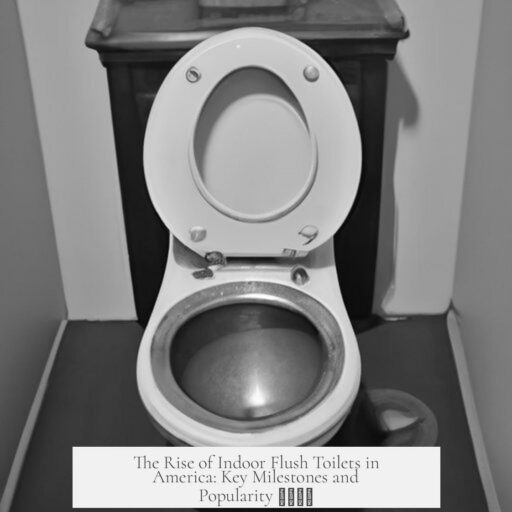Indoor flush toilets became popular in America primarily in the first few decades of the 20th century. This rise coincided with widespread access to running water and improved sewage systems, which made flush toilets practical and convenient in most homes and buildings.
Flush toilet technology evolved significantly across the 19th century. The invention of the S-trap around 1775 made flush toilets more effective by preventing sewer gases from entering homes. Various valves, traps, and pumping mechanisms improved toilet function throughout the 1800s. Public pay flush toilets appeared as early as 1851, notably in Hyde Park, marking early public acceptance.
Despite these advancements, the popularity and spread of indoor flush toilets depended heavily on access to running water and drainage infrastructure. In the mid-1800s, flush toilets were mainly installed in upscale homes, hotels, and public buildings in more populated areas. However, many rural areas and older buildings lacked such infrastructure. These locations often used manually refilled flush toilets or continued relying on outhouses.
During the late 19th century, some new house designs included private bathrooms, especially in wealthy areas. By around 1910, it became fairly standard for new residential and hotel constructions to include private indoor bathrooms equipped with flush toilets. This shift reflected rising public expectations for sanitation and convenience. For example, New York City implemented regulations in 1901 requiring water access on every floor of new apartment buildings, eventually mandating bathrooms in every unit. By the 1930s, 89% of NYC apartments had a bath or shower with running water and waste systems.
Rural areas and older urban districts lagged behind this trend. Many farms relied on well-water pumps to supply water, which sometimes limited flush toilet use. Older buildings and tenement housing often lacked bathrooms entirely or used shared facilities, delaying universal indoor toilet adoption.
| Time Period | Flush Toilet Status | Infrastructure Status |
|---|---|---|
| 1850s-1870s | Flush toilets mostly in upscale homes & public buildings | Limited running water and sewage systems |
| 1900-1920s | New buildings widely include private indoor bathrooms | Running water and drainage begin spreading in cities and towns |
| 1930s-1950s | Majority of urban homes equipped with flush toilets | City-wide infrastructure largely established; rural areas catching up |
Virginia City, Nevada, offers a microcosm of this national trend. The wealthy first gained access to flush toilets in the 1860s, when George Hearst installed one in a mining office. Public flush toilets appeared by the mid-1870s in local schools. However, outhouses persisted in the mining district through the mid-20th century. Some residents still used them into the 1950s and 60s. This illustrates how social and infrastructural factors slowed indoor flush toilet adoption in some communities.
To summarize key points:
- Flush toilet technology advanced steadily in the 19th century but required water and sewage systems to become broadly practical.
- Indoor flush toilets were initially features of wealthy homes, upscale hotels, and some public buildings.
- Major expansion of indoor flush toilets occurred 1900–1930, driven by urban infrastructure development.
- Regulations and building codes, especially in cities like New York, pushed for private bathrooms in new housing.
- Rural and older urban areas experienced slower adoption, often relying on alternative sanitation methods for decades.
- Case studies like Virginia City reveal disparities in access and timelines across regions and social classes.




